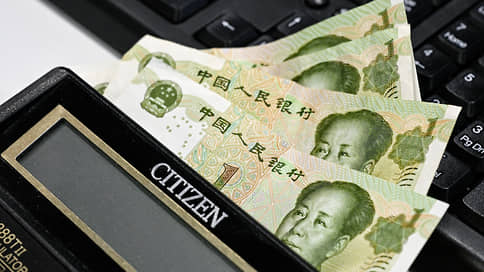Issuers raise rates on yuan bonds
[ad_1]

The shortage of yuan in the Russian market is forcing banks and companies to raise rates to attract the Chinese currency. Last week, Rusal issued bonds with a coupon of 7.9% per annum, which is more than double the coupon for the debut issue, which took place in the summer of 2022. The largest banks increased rates on yuan deposits to 3–5% per annum, while in the fall of 2022 they rarely exceeded 1.5% per annum. However, in more profitable bond issues it is worth taking into account the limited liquidity of individual issues, as well as the credit quality of the issuer and the risks of further growth in rates.
New Chinese wave
Last week, two issuers simultaneously placed bonds denominated in yuan. Rusal offered investors debt securities with a maturity of two and a half years with a coupon not exceeding 8% per annum. Apparently, demand was quite high with the initial placement volume of CNY 500 million. As a result, the issuer increased the volume to CNY 900 million, and the coupon rate was reduced to 7.9% (yield to maturity 8.14% per annum).
Gazprombank started to the placement of three-year bonds for CNY 1 billion, which may last until June 28. It is planned to place them to a wide range of investors, for this purpose the denomination of the bond has been reduced (100 CNY versus 1000 CNY in other issues). However, the coupon rate is set at only 5% per annum.
Currently, Rusal has the widest range of yuan debt securities – 11 issues of classic bonds worth CNY 24.5 billion.
According to Rusbonds, the yield on them is 6.7–7.4% per annum depending on the duration (0.3–2.5 years). The previous time the issuer placed such securities at the beginning of the year – then the yield on the issue for two and a half years was 7.4% per annum. As Alexander Ermak, chief analyst of debt markets at BC Region, notes, coupons and yields on bonds in yuan during placement have been constantly growing since 2023 as a result of competition with substitute bonds and the normalization of rates in yuan in the Russian market.
Private interest
Yuan bonds are one of the protective instruments on the market that insure against the risk of a weakening ruble. According to Digital Broker analyst Vladimir Kornev, such investments in them may be justified over the horizon of one or two years as the Fed rate decreases, which may lead to a weakening of the dollar relative to other currencies, including the yuan.
“Many investors believe it makes sense to have yuan bonds in long-term portfolios. Accordingly, preference should be given to securities that are long enough compared to deposits,” notes Mr. Kornev.
BCS World of Investments also notes stable customer demand for market placements. However, most placements are carried out among a limited circle of investors. According to Alexander Ermak, 28 issues (less than 44% of all issued securities) of 16 issuers worth CNY 92 billion are traded on the Moscow Exchange, which represents 86.1% of the total volume of yuan bonds.
Disclosure will show
At the same time, it is worth considering that even bonds traded on the exchange have different liquidity, and therefore the ability to quickly buy and sell securities. It is worth paying attention to the credit quality of issuers. According to BCS World of Investments stock market expert Lyudmila Rokotyanskaya, securities with a rating of at least A- are considered the most reliable. To get an idea of the financial condition of the issuer, you can read the opinions of rating agencies. “In recent years, issuers have been actively participating in webinars organized by brokers, aggregators Cbonds, Rusbonds, as well as the Bond Owners Association. At them, issuers talk in detail about themselves and answer investors’ questions,” notes Ms. Rokotyanskaya.
Despite significant volumes of yuan bonds, opportunities for diversifying an investor’s portfolio are limited, portfolio managers note.
Ivan Panov, portfolio manager of Pervaya Management Company, points out that about 74% of the market for such bonds is concentrated in two issuers (Rosneft and Rusal), while 50% is accounted for by three bond issues.
Diversity of risks
One should not discount the risks of a weakening of the yuan, the exchange rate of which is regulated by the People’s Bank of China. Ivan Panov draws attention to deflationary trends in the country’s economy, as well as problems in the real estate sector, which may contribute to easing the regulator’s monetary policy.
Analysts do not rule out a further increase in rates on instruments in the Chinese currency.
They name the key reason for the ongoing shortage of yuan, which may worsen against the backdrop of Russia’s continued refusal to accept the currencies of unfriendly countries and high geopolitical risks.
“Unlike dollars and euros, which could be borrowed from the Western financial system, Russian companies receive yuan mainly from trade. Therefore, there is a chronic shortage of yuan, especially long-term ones, in the Russian financial system,” notes Sovcombank chief analyst Mikhail Vasiliev. In conditions of high competition for yuan, companies and banks will be forced to further raise rates, which will put pressure on the quotes of outstanding issues.
[ad_2]
Source link





